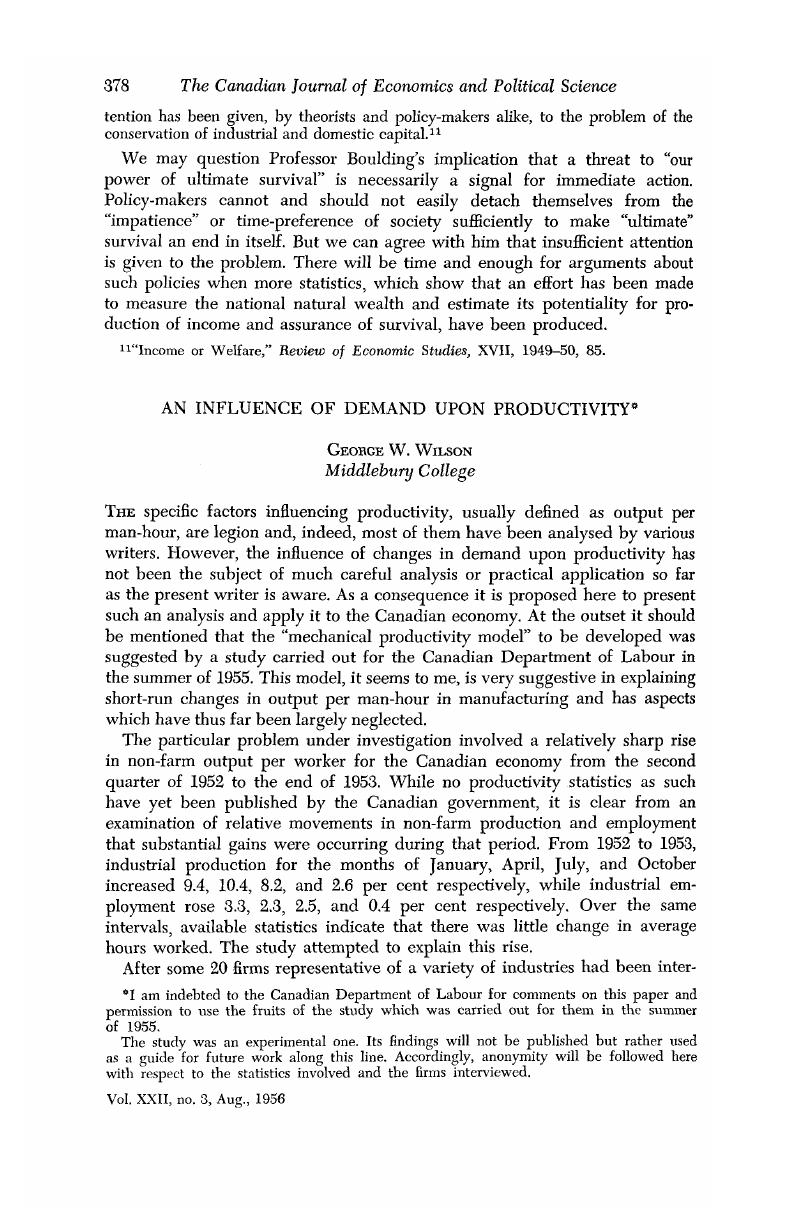No CrossRef data available.
Published online by Cambridge University Press: 07 November 2014

I am indebted to the Canadian Department of Labour for comments on this paper and permission to use the fruits of the study which was carried out for them in the summer of 1955.
The study was an experimental one. Its findings will not be published but rather used as a guide for future work along this line. Accordingly, anonymity will be followed here with respect to the statistics involved and the firms interviewed.
1 Thus, if y man-hours are needed per machine-hour for any level of output in excess of k units (where k represents the lower limit mentioned above), then productivity of labour with an ouptut of x will be x ÷ y ( where x = or > k).
If production rises by n per cent (x(1+n)) then productivity rises to x(1+n)/y, an increase of n per cent.
2 One firm complained that whereas its biggest order was for approximately 5,000 units, a United States plant of comparable size, relative to the industry, often had orders of 150,000 units over a similar period of time. Another firm stated that a volume of production of 700 units per week was normal in its plant but that United States plants ran some 25,000 units per week. The degree of mechanization or automation will obviously differ substantially with such discrepancies in volume.
3 This clause refers to the basic steel industry. It seems reasonable to infer that the ratio of the demand to aggregate steel capacity during 1951–2 and the first half of 1953 was relatively higher than comparable ratios in other industries surveyed. Unofficial figures place the level of steel operations in 1951 at 95–100 per cent of capacity, in 1952 at 90–95 per cent, and in the first half of 1953 at 90–95 per cent. With relatively fixed requirements tor manpower, productivity per man-hour would inevitably increase with expanded production.
4 It is assumed that the chain of causation runs from the United States to Canada with respect to changes in economic conditions.